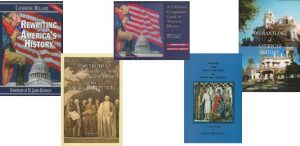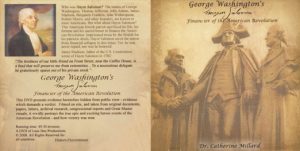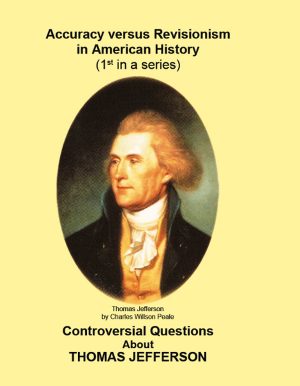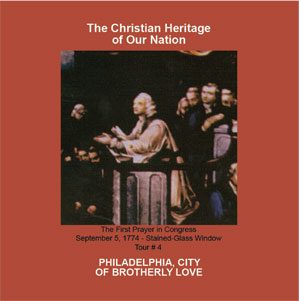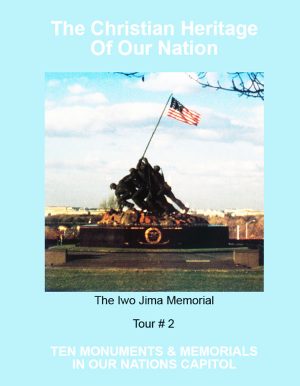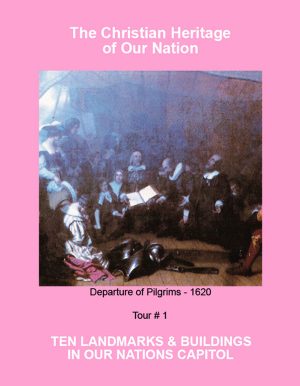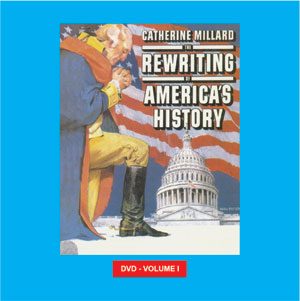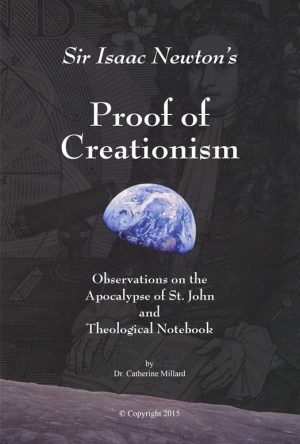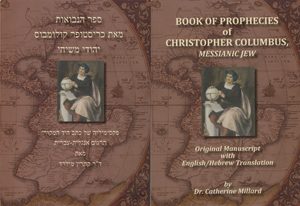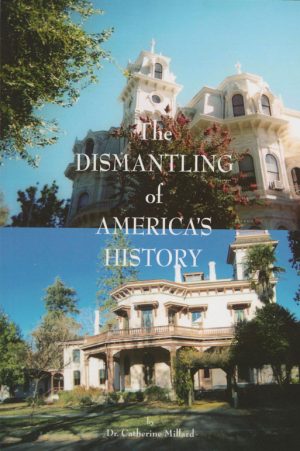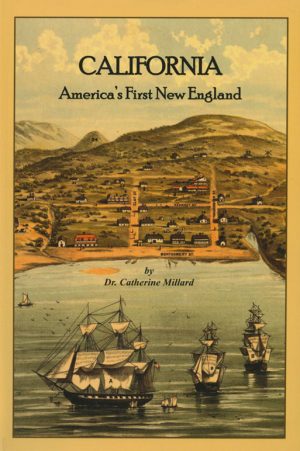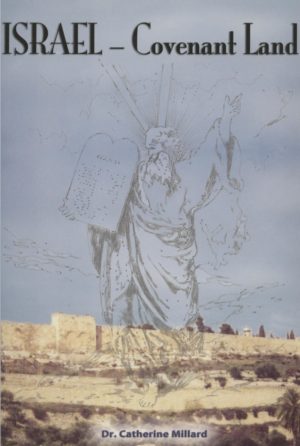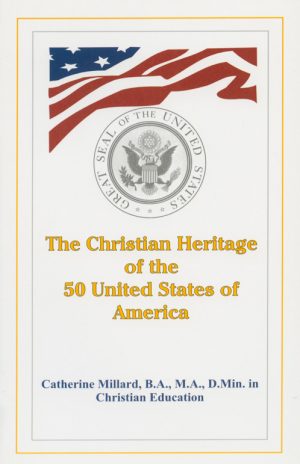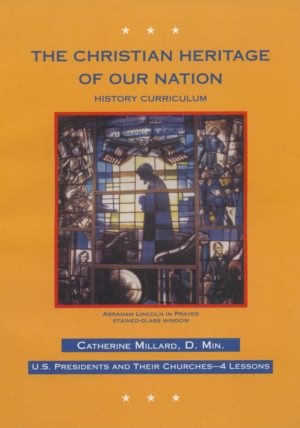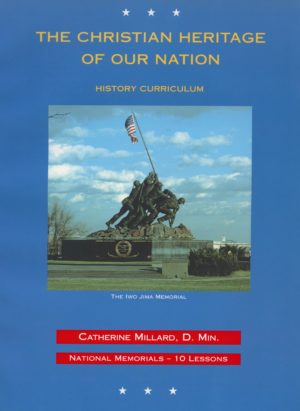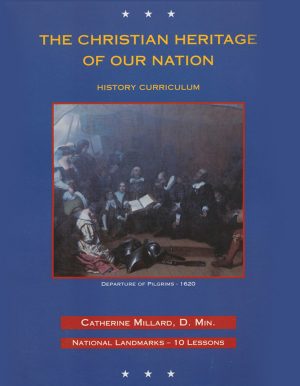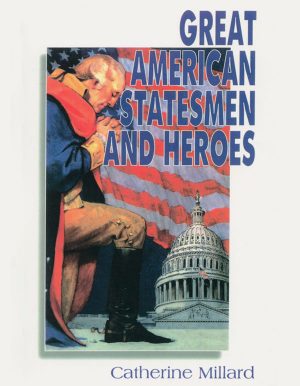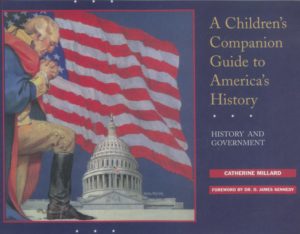Commit to Memory:
II Corinthians 5:1.
Read Exodus 25 to 31.
The Story
When the Lord came down to Moses on Mount Sinai, He showed him how he should make for the people a moveable Church, or Tabernacle. The Levites were to have charge of it and set it up like a large tent every time that Israel encamped. A space 1,800 by 900 feet, was called the “Court” and enclosed by Curtains hanging between Pillars. The Gate was toward the East.
Near the Gate, within, stood a large brazen Altar for sacrifices, in which fire was kept continually burning. Beyond it stood the Laver, a large vessel of water for purifying and washing. In the midst of the Court stood the Tabernacle itself, facing eastward. It contained two rooms, the first twice as long as the second. These were separated by a beautiful linen Curtain, embroidered with blue, purple and scarlet in patterns of angels. Four coverings were put over the Tabernacle.
The larger room of the Tabernacle was called “The Holy Place.” It contained in the centre an Altar of Incense, where prayer to God was daily made. On the North side stood a Table of Shewbread; having 12 loaves of bread, new each week, placed by the priests. On the South side stood a Golden Candlestick, or lampstand, having 7 branches and lights.
The “Most Holy Place,” (or “Holy of Holies,”) beyond the “Vail,” or (Curtain) kept, in solemn silence, the golden Ark of the Covenant; a precious Chest, holding the Ten Commandments, written on the two tables of stone; a golden vessel of Manna and Aaron’s Rod that budded.
The Lid of this Ark was called “The Mercy Seat.” On each end of it was a golden angel, or Cherub. Between the Cherubs the Lord, in mercy, showed His presence by a Light, (“Shekinah”).
The Priests only, (Aaron’s family of Levites), went into and took care of the Holy Place. The other Levites assisted them in sacrifices in the Court. The High Priest wore a Mitre, or beautiful cap; a Robe of fine linen, with bells and golden balls hanging alternately from its border; an Ephod, or fine coat, having a precious stone on each shoulder; a Girdle; and a Breastplate, composed of twelve stones set in gold.
No one, save the High Priest, dared to enter the Holy of Holies, and he only once a year, on the great “Day of Atonement;” when he came before that Light of the merciful God, to pray for the forgiveness of all the people.
Review
While on Mount Sinai, what was Moses commanded to make?
Why was it moveable?
For whose blessing was the Church built?
Who had charge of it?
How large was the Court?
What stood in it? Where was the Gate?
How many rooms were in the Tabernacle?
Were they of equal size?
How were these rooms separated?
What covered the Tabernacle?
By what name was the larger room known?
Can you tell what was in that room?
Tell the name of the small room?
What was solemnly kept there?
What did that Ark contain? See Hebrews 9:2-7.
What was the Lid of the Ark called?
Who appeared between the Cherubim? Why?
Of Whom is the light a likeness? Acts 2:3.
What were the Priests’ duties?
Could they enter the Tabernacle?
Who were the Priests? Who were the Levites?
What was their duty?
Describe the dress of the High Priest.
Did he dare to enter the Holy of Holies? How often?
On what day?
Why did he come before God?
Notes: Tabernacle (a tent). This moveable Temple was about 18 feet high, 18 feet wide and 54 feet long: built by placing upright gilded boards each 18 feet high and 30 inches wide; locking them together by five bars on each side run through rings of gold set into the boards. Enclosed, shut in. (The teacher will explain, if possible, how large such a field or area would be). Pillars, columns. Court, the space around a building. Brazen, made of copper or brass. Continually, always. Purifying, making clean. Embroidered, ornamented with needlework. Coverings, the first, or inner covering of the Tabernacle was fine linen, like the curtain; the second was of woven goats’ hair, the third of rams’ skins, dyed red; and the fourth of badgers’ skins. Incense, substances, which are burned to make a sweet perfume before the Lord. Holy Place, the dimensions of the Holy Place were probably 18 feet each way. Solemn, sacred, awe-inspiring. “Shekinah,” the light of the glory of God, by which the people knew the presence of God. (See Matthew 17:5. Luke 2:9). Assisted, aided, helped. Mitre, a high cap on which was written “Holiness to the Lord.” Robe, a garment for the body. Girdle, a belt, or sash. Breastplate, this beautiful plate contained 12 stones in four rows of three; each inscribed with a name of a tribe of Israel, the following is supposed to be the order; 1. Sardius (or Carnelian of Sardis). 2. Topaz (our Chrysolite of greenish yellow). 3. Carbuncle (our Emerald, green, probably). 1.Emerald (interchanged with Carbuncle, red). 2. Sapphire. 3. Diamond (supposed to be the onyx, alabaster or jasper). 1. Ligure, (or jacinth, blue). 2. Agate. 3. Amethyst (purple). 1. Beryl. 2. Onyx (lined black and white). 3. Jasper (dark green). Atonement, reconciliation, or bringing to one mind those at strife. Merciful, full of pity and help. Forgiveness, the taking away of guilt and punishment.
To learn more. click here.
